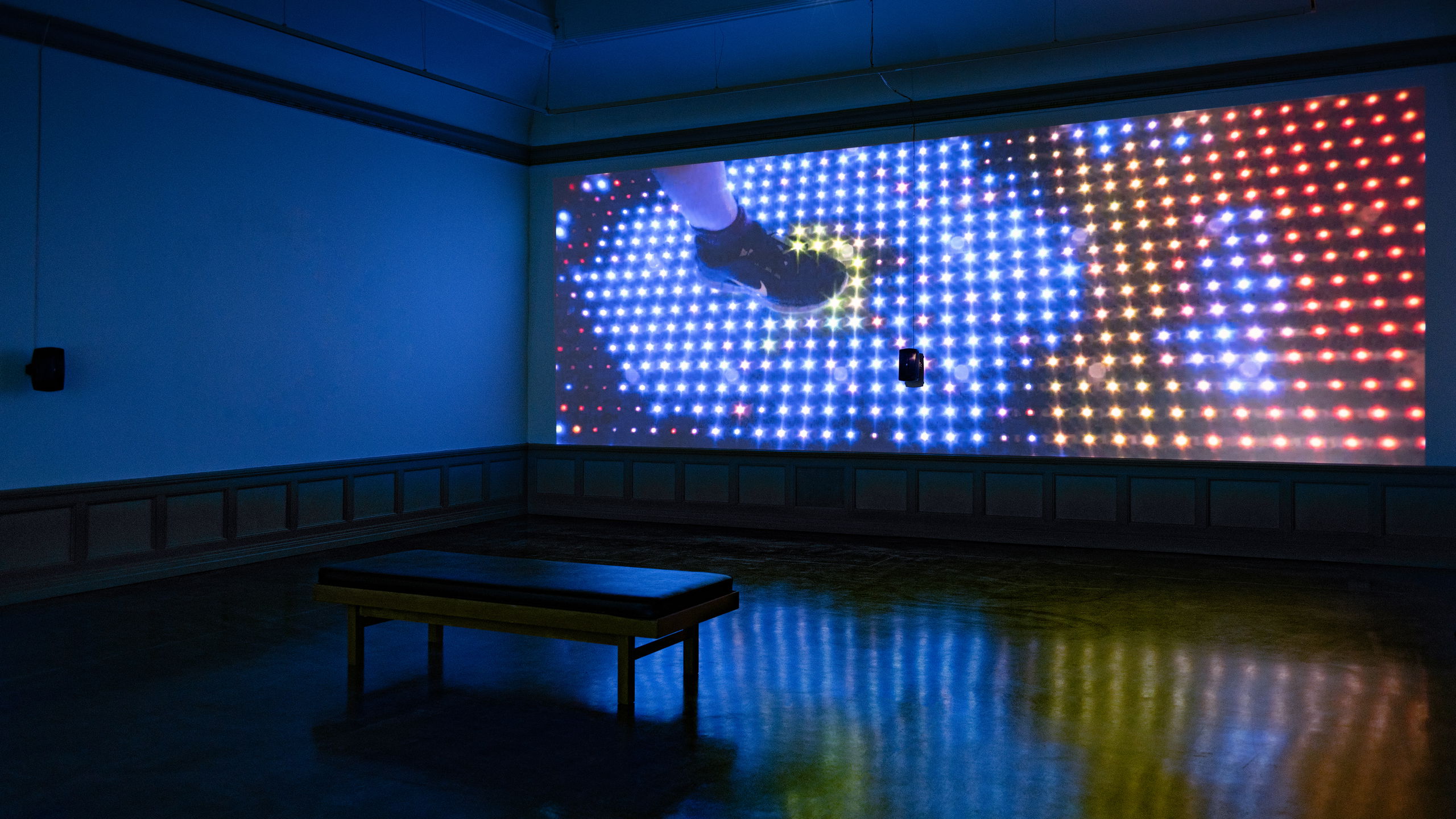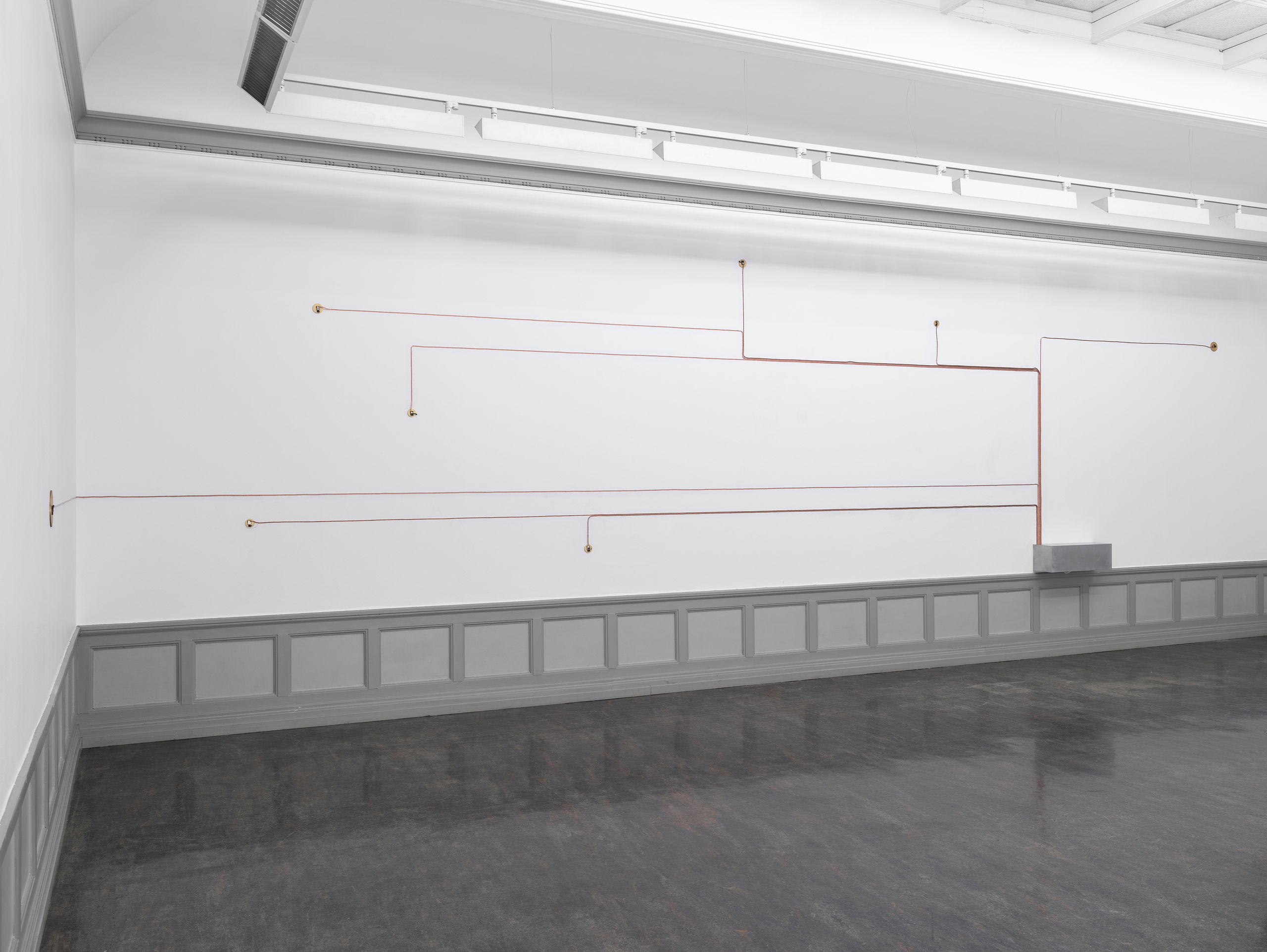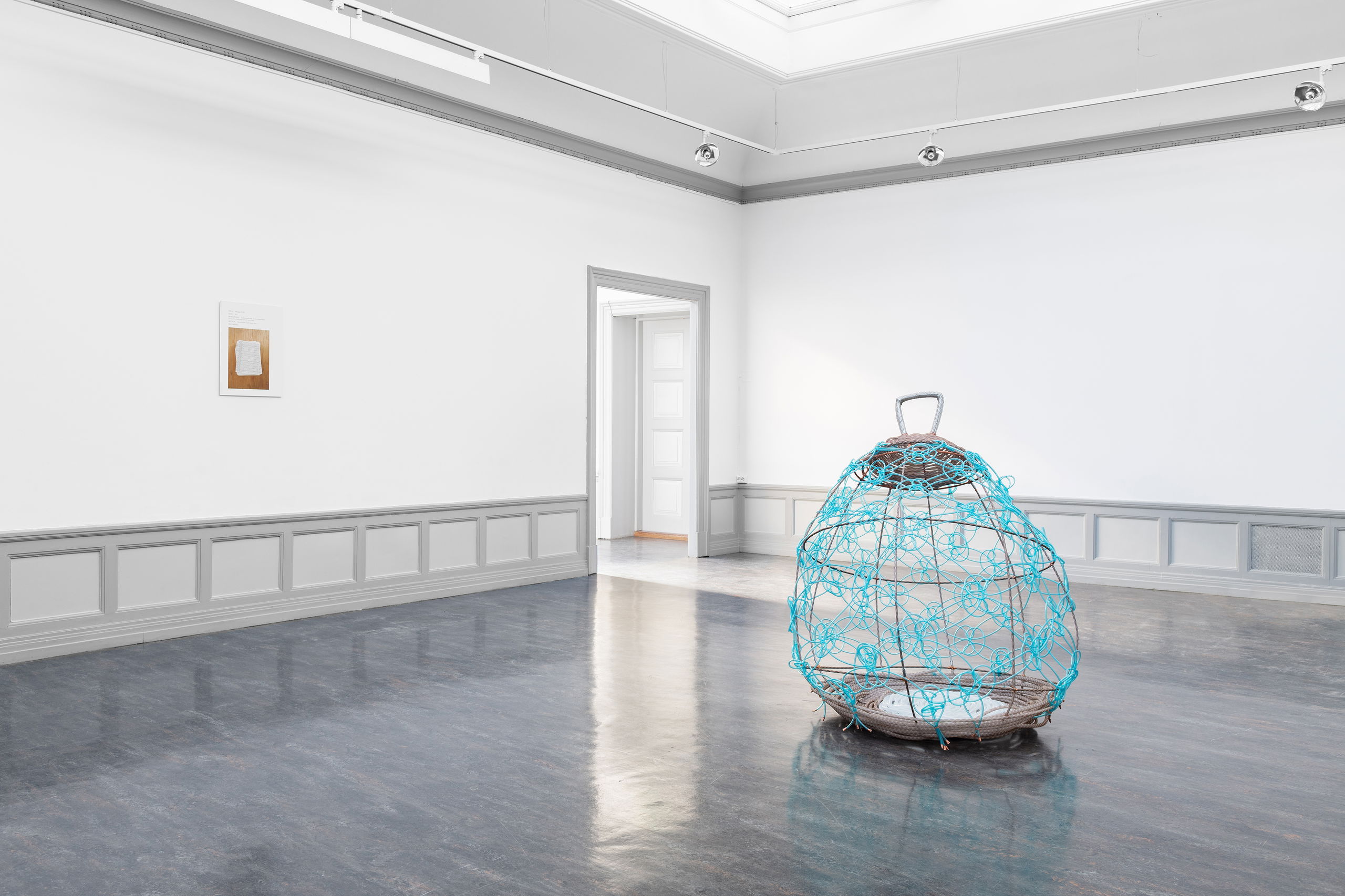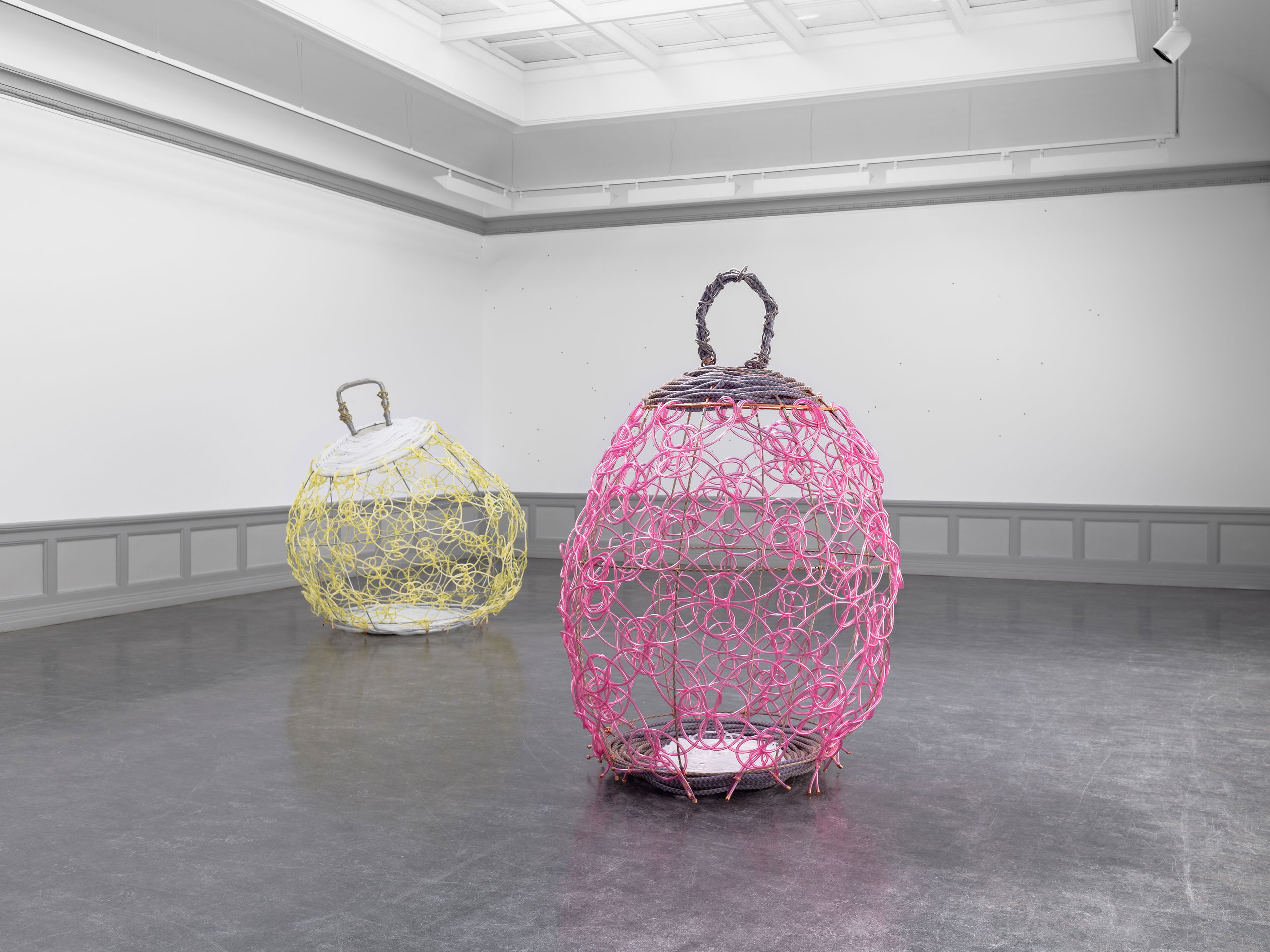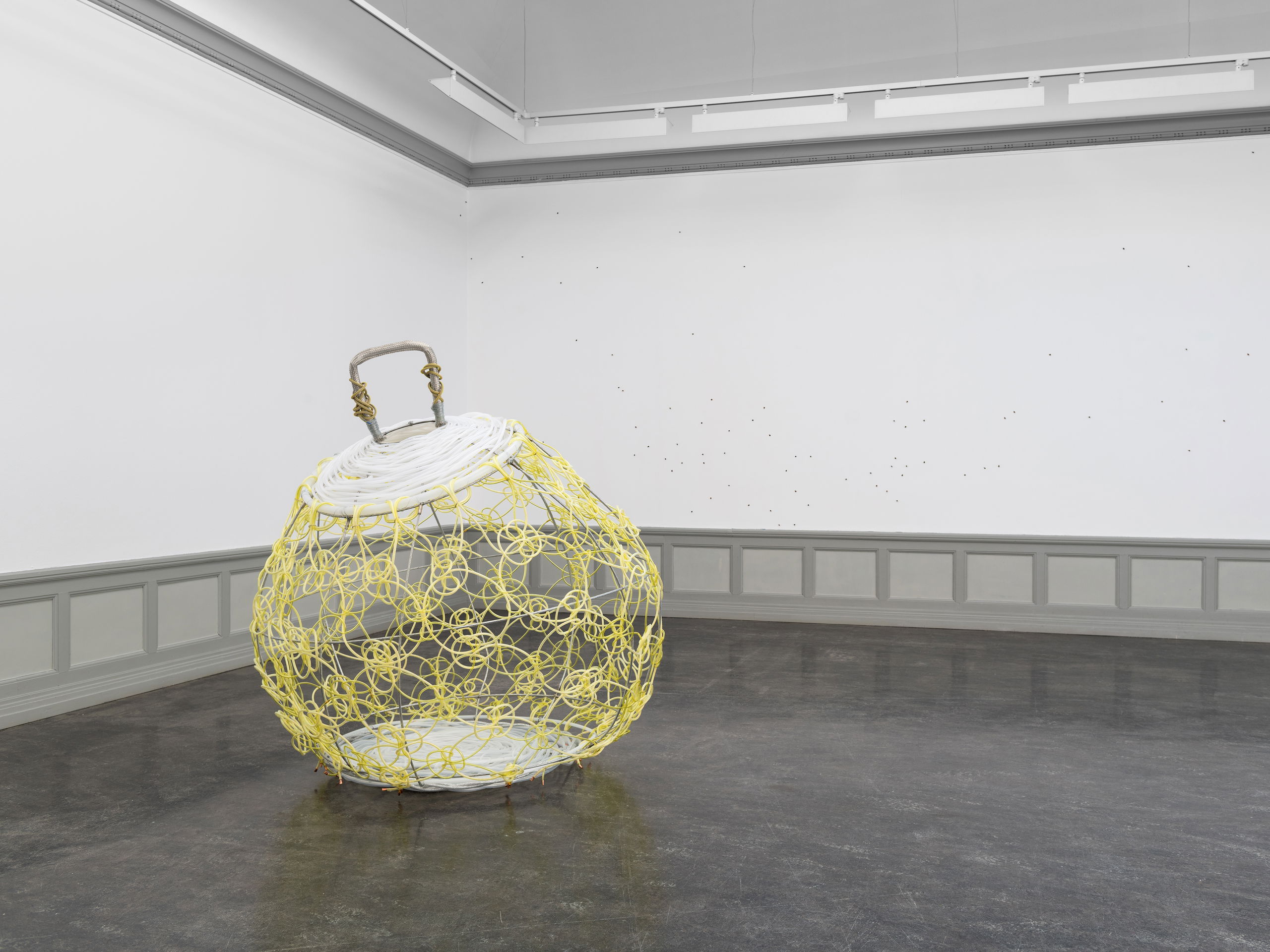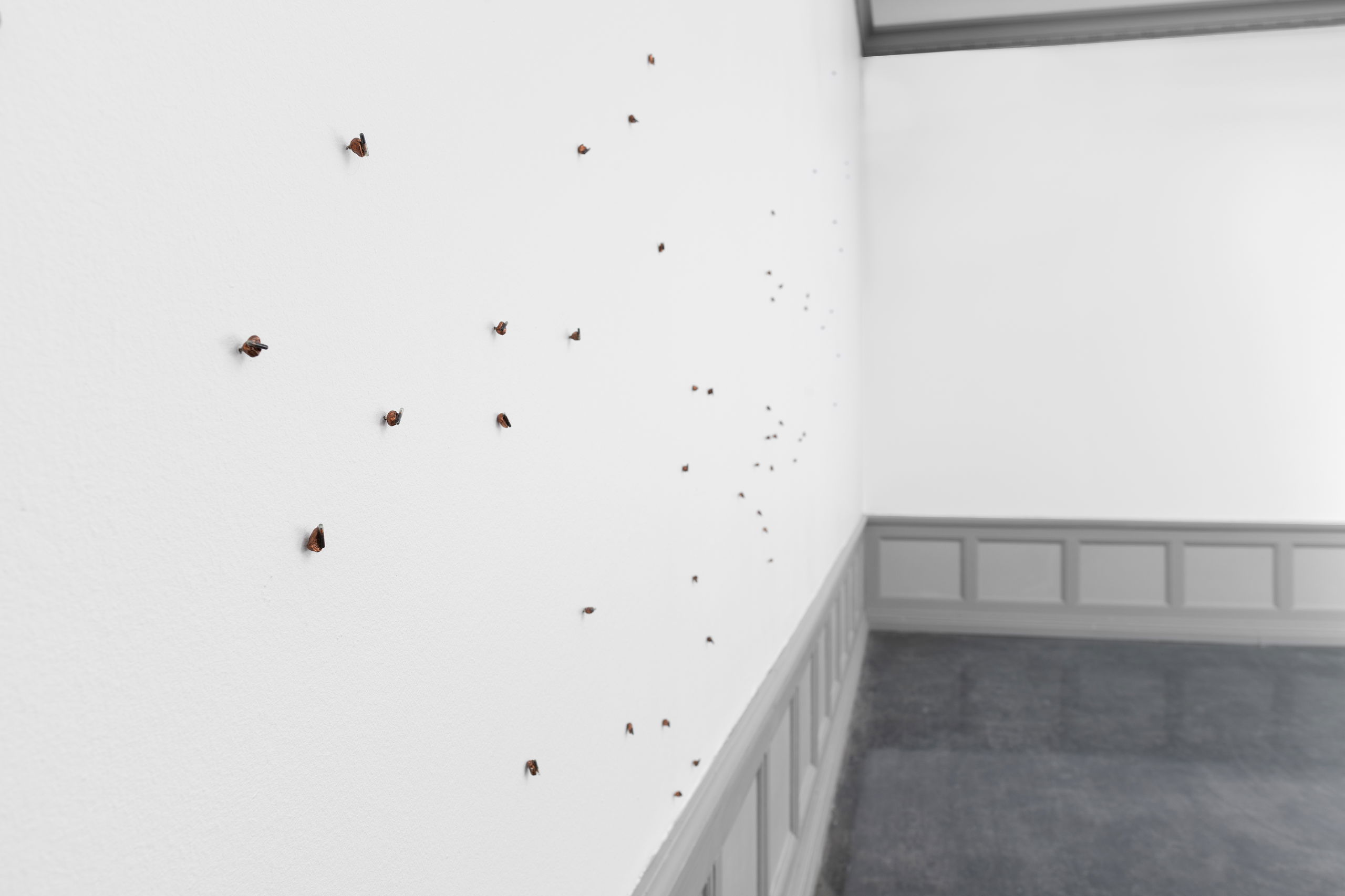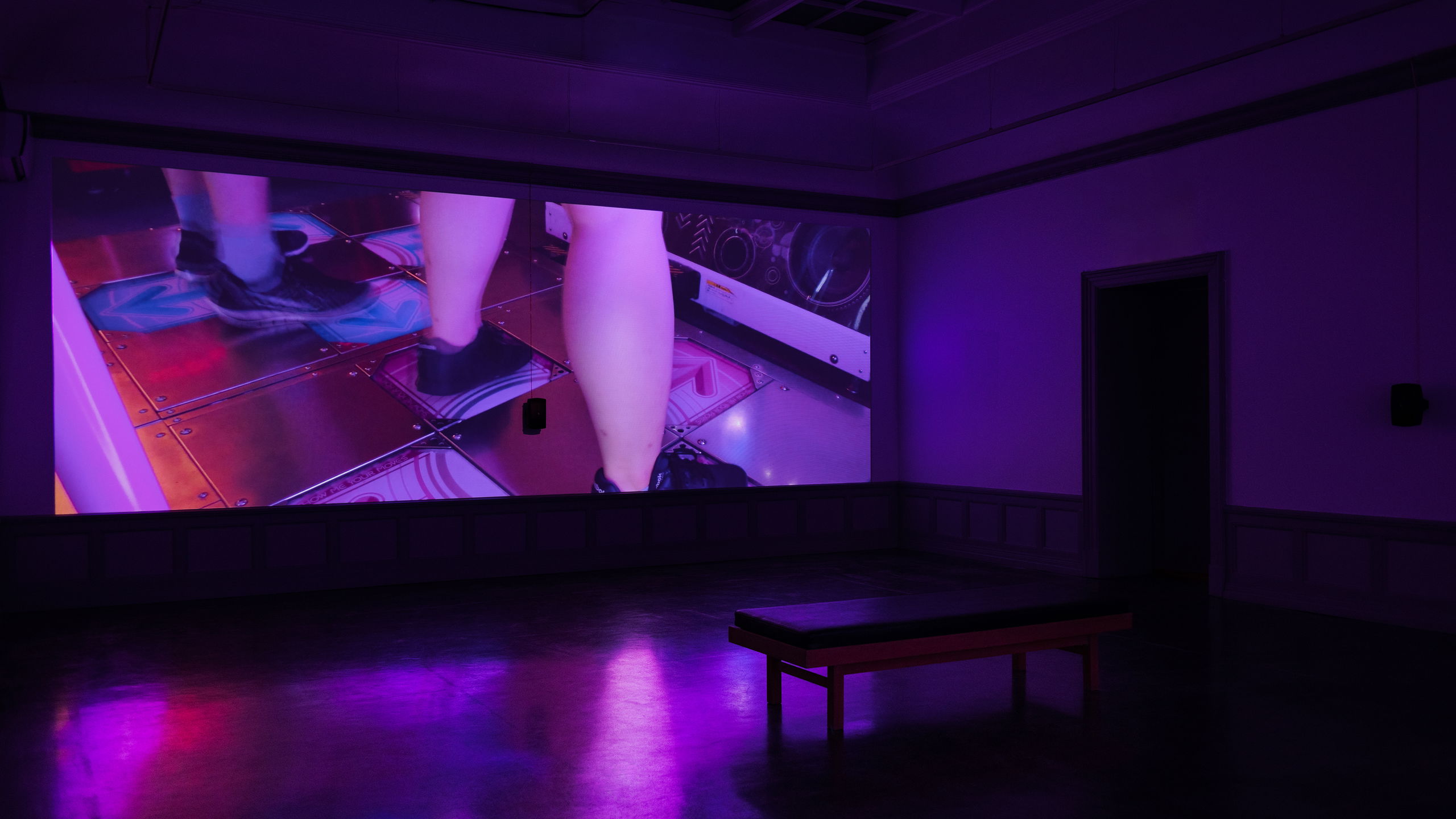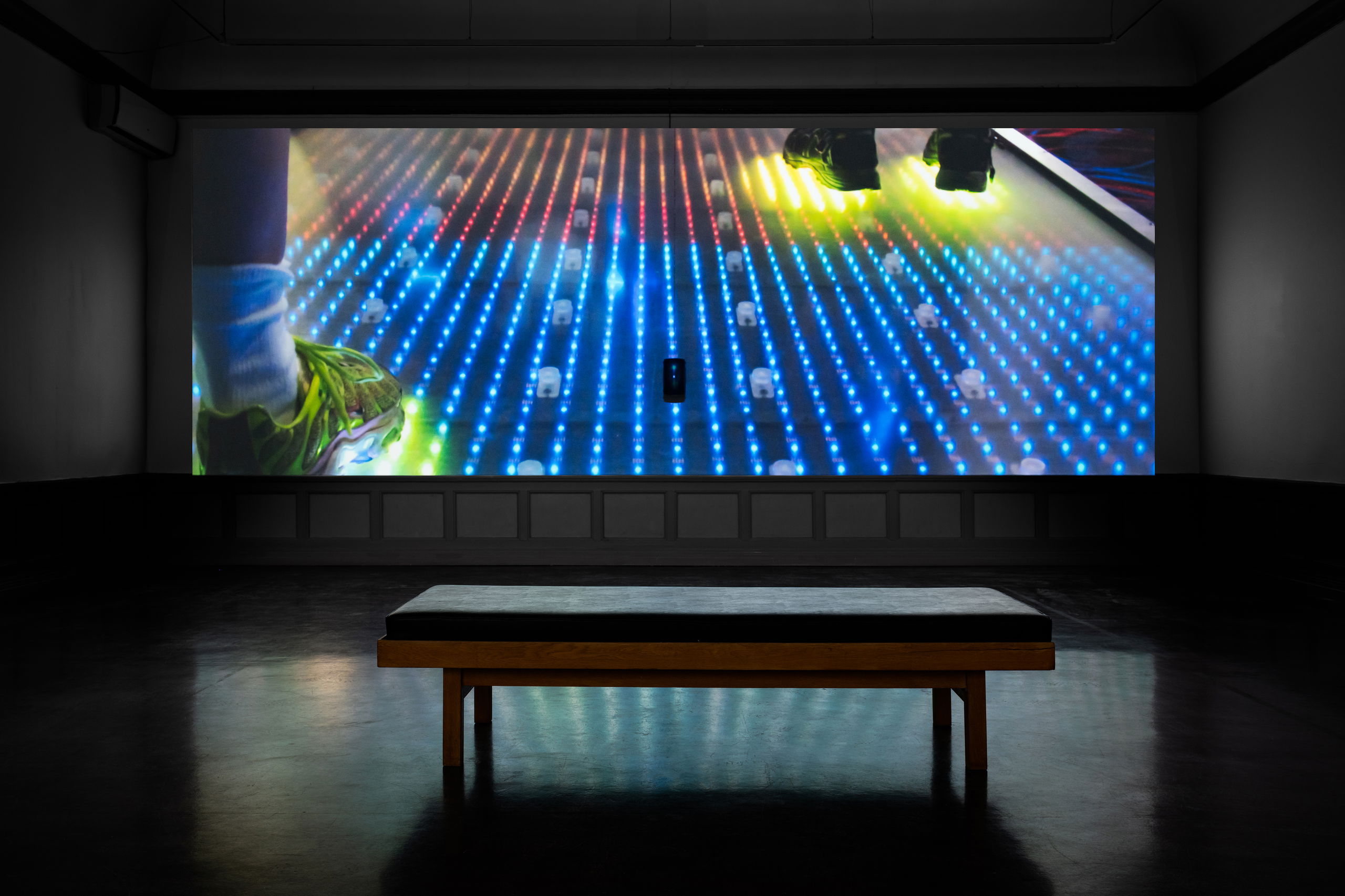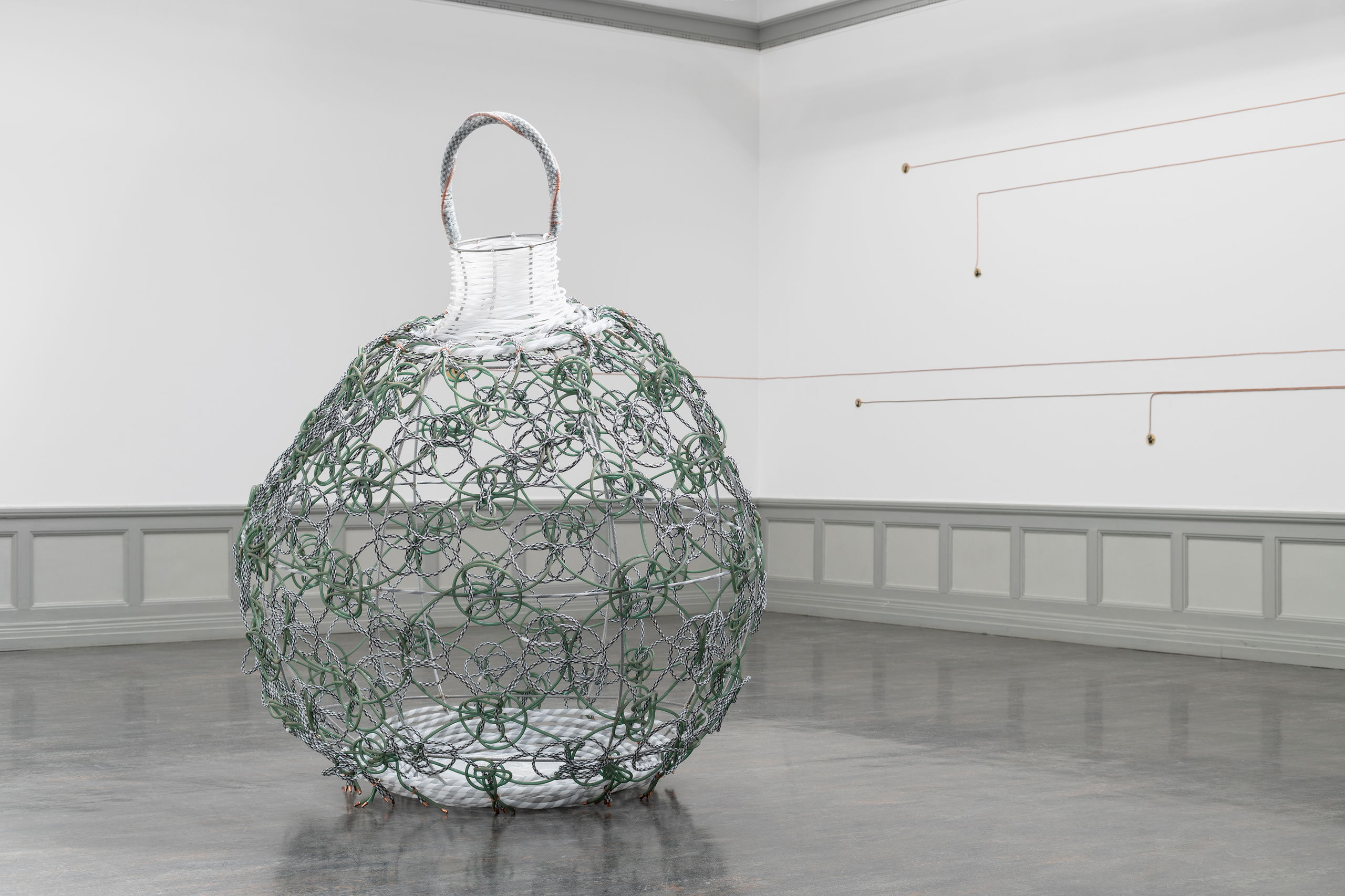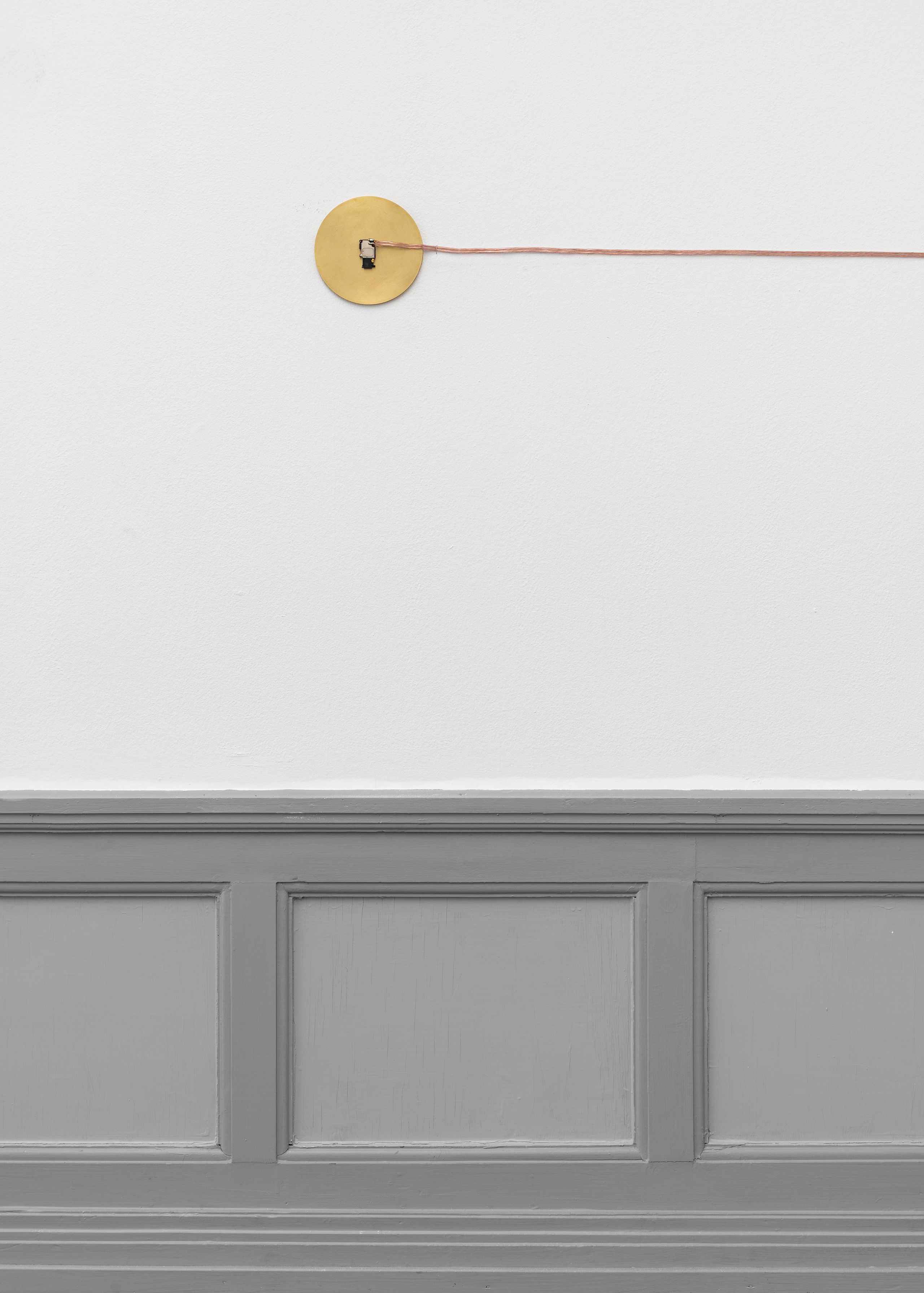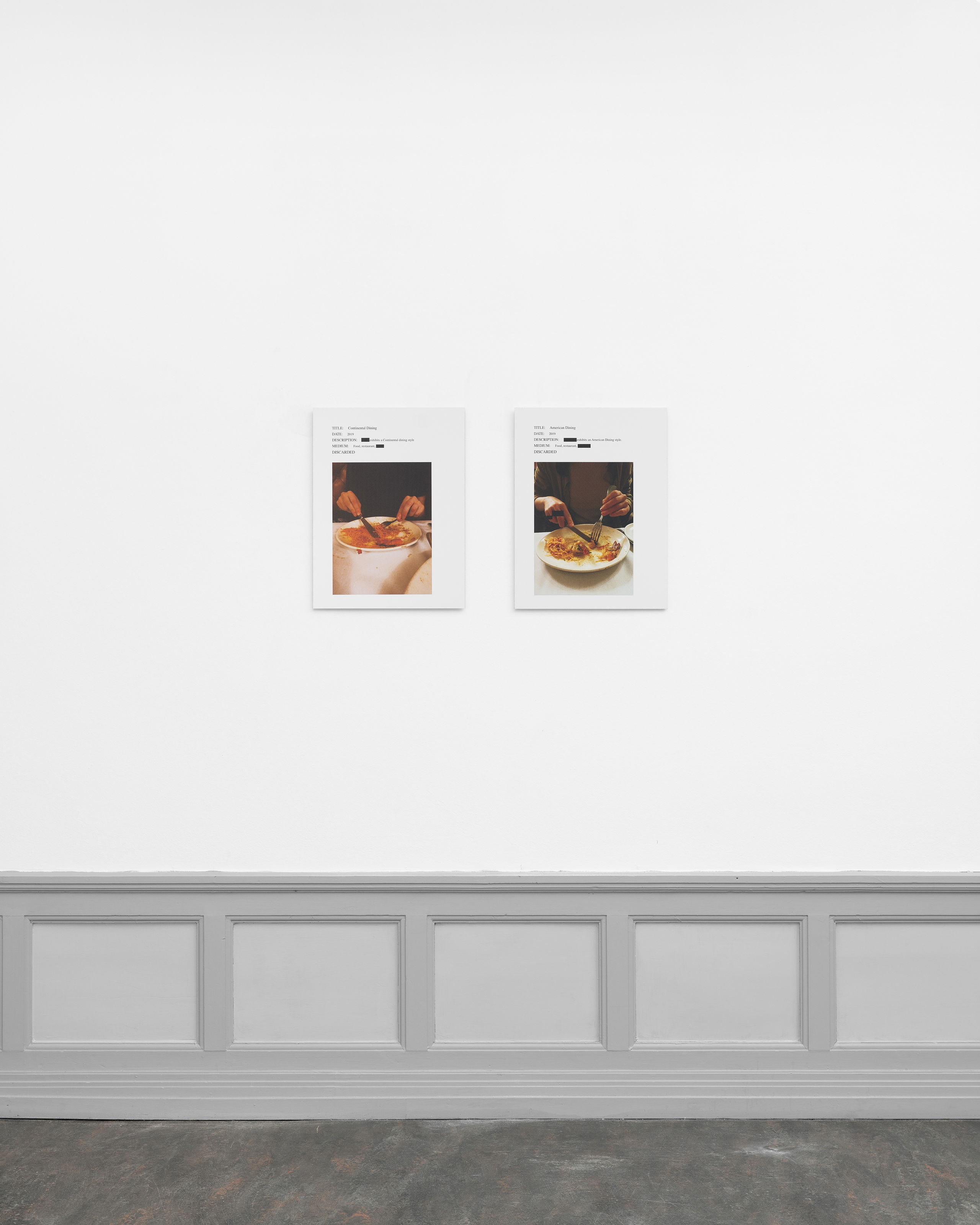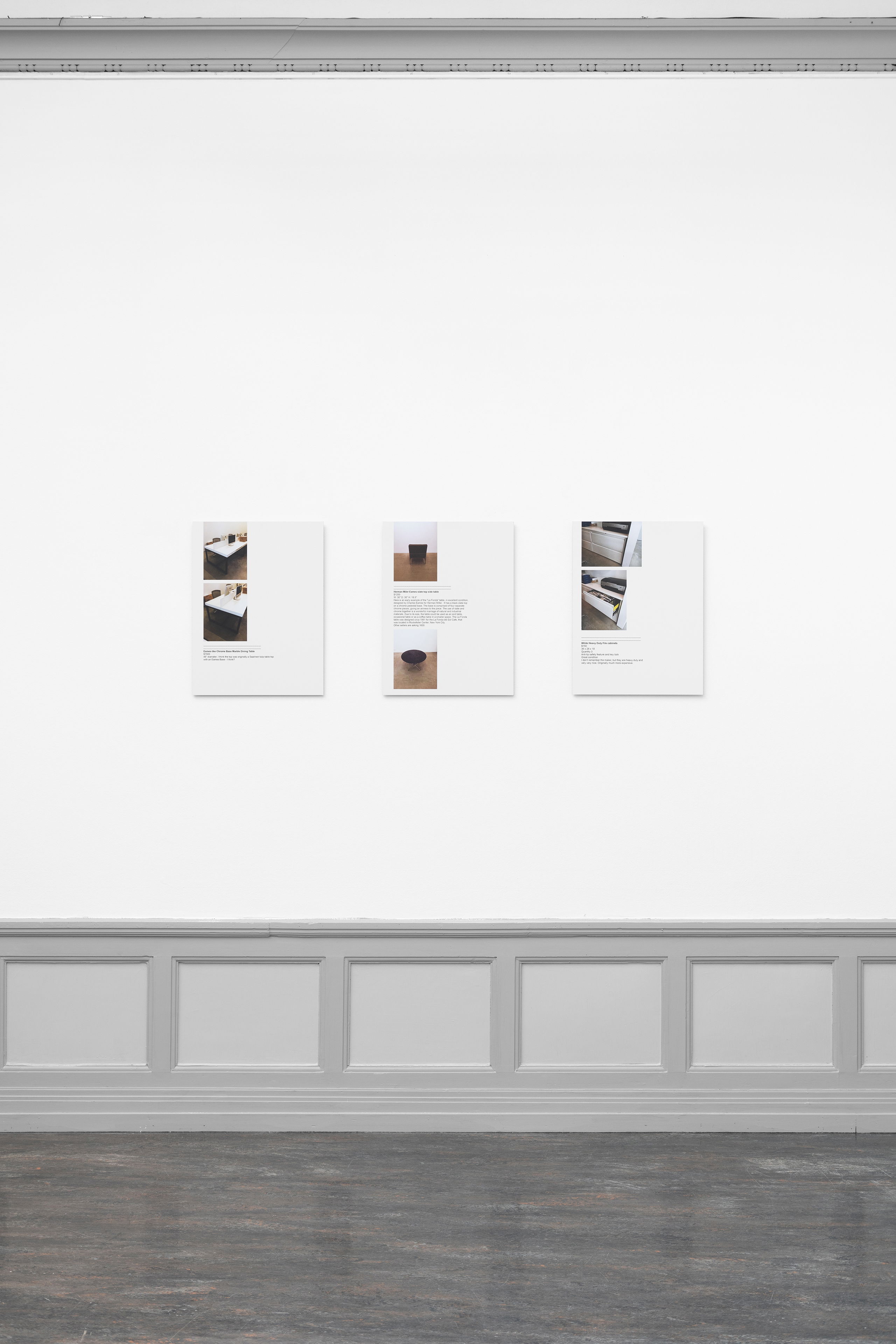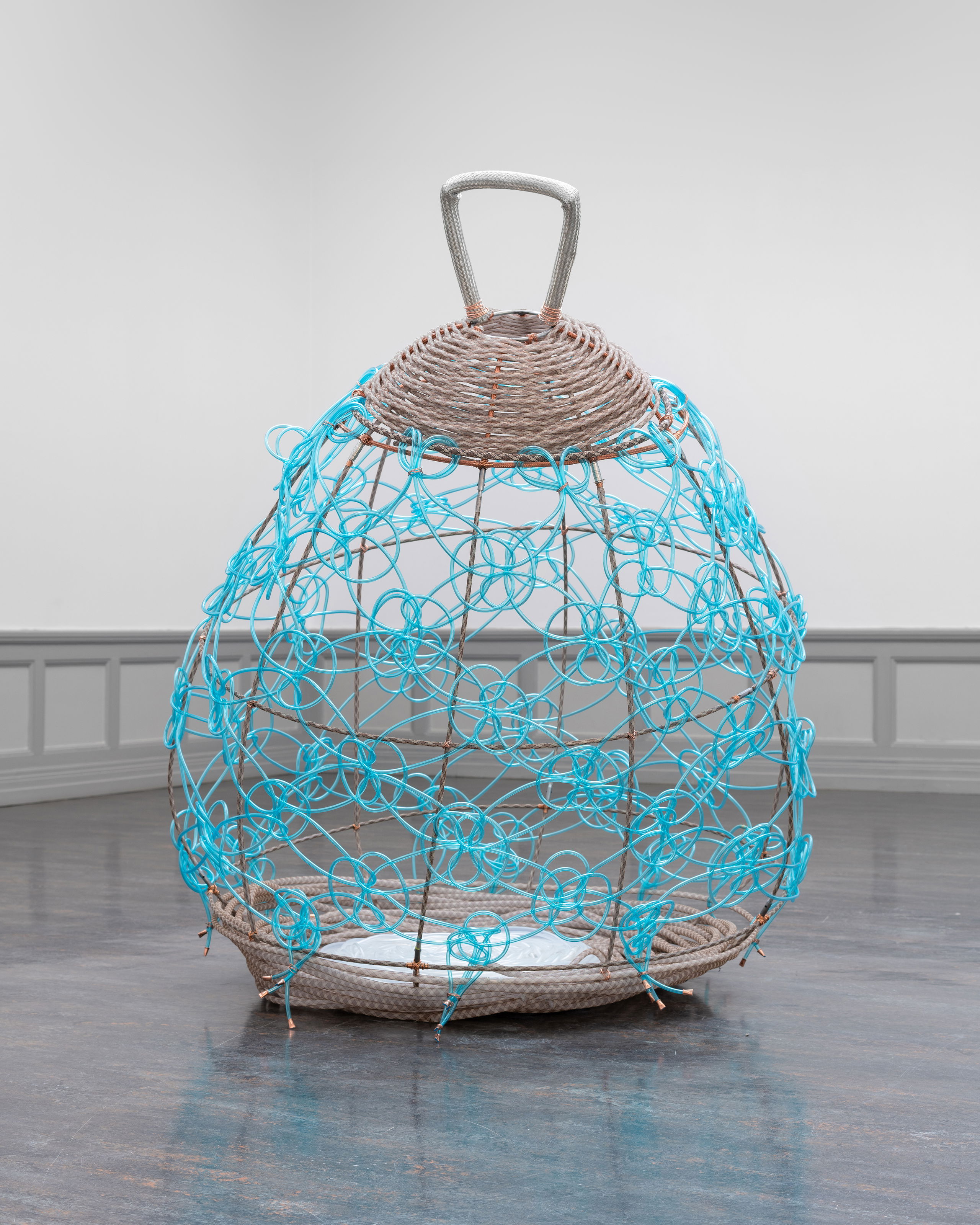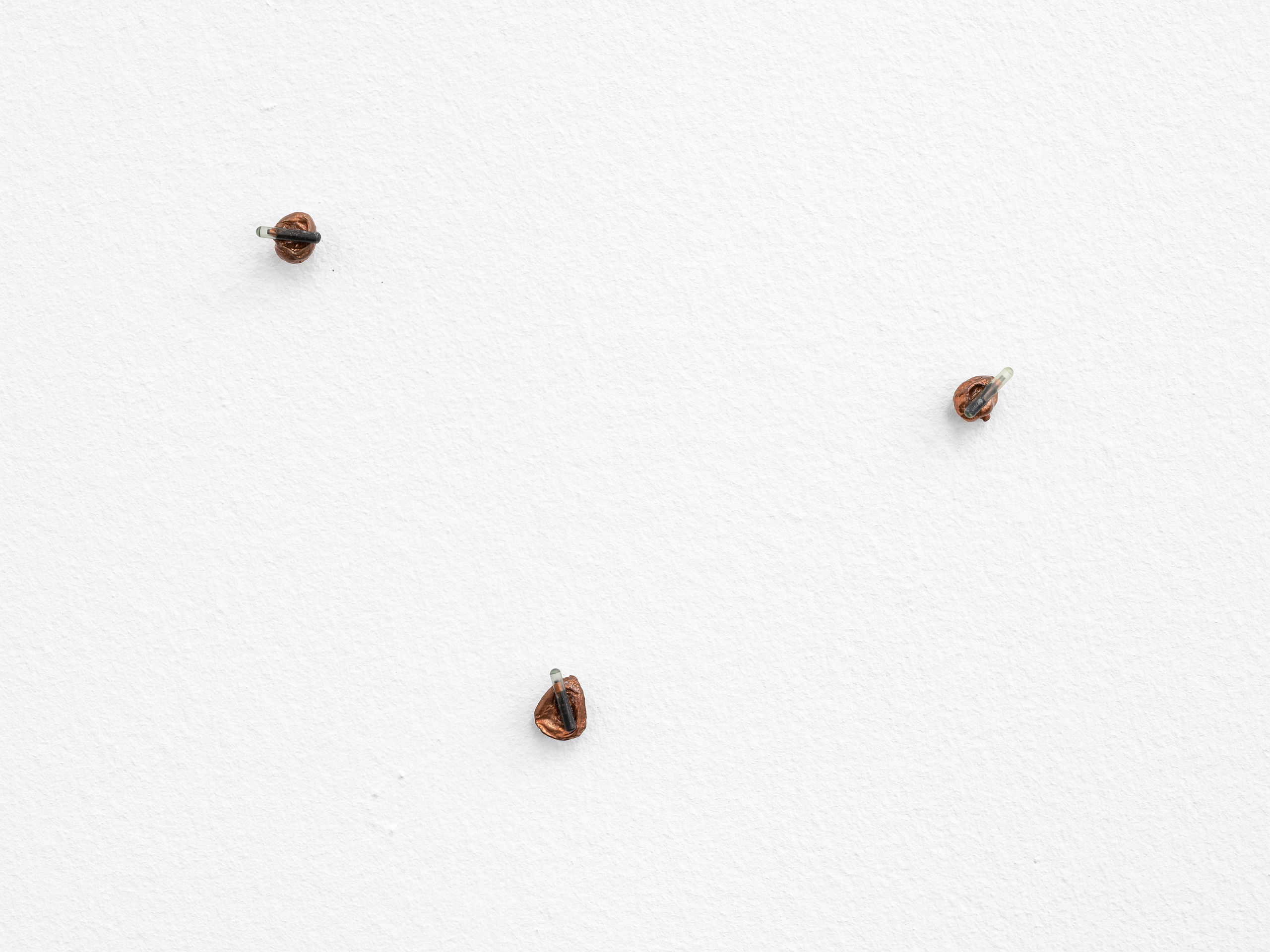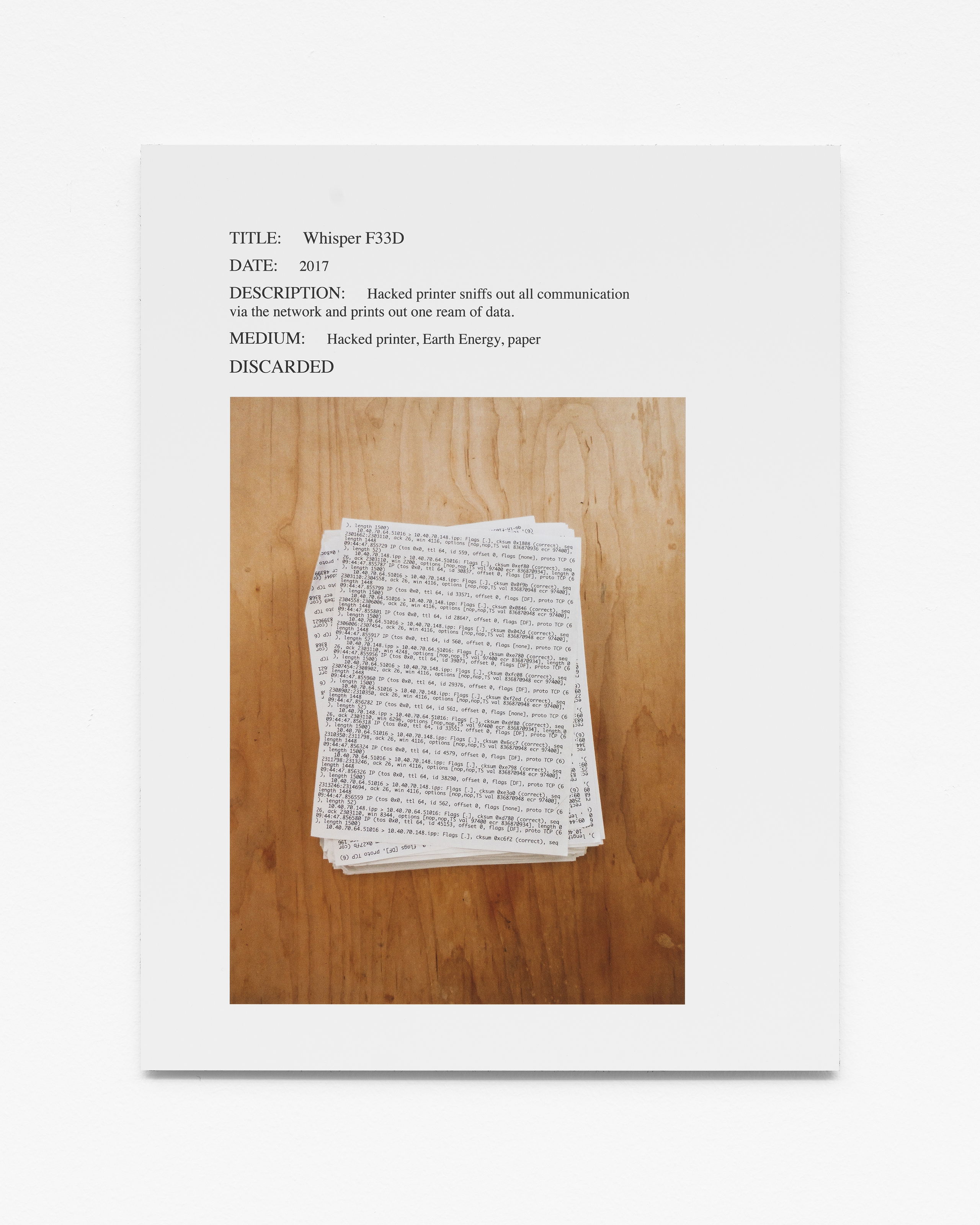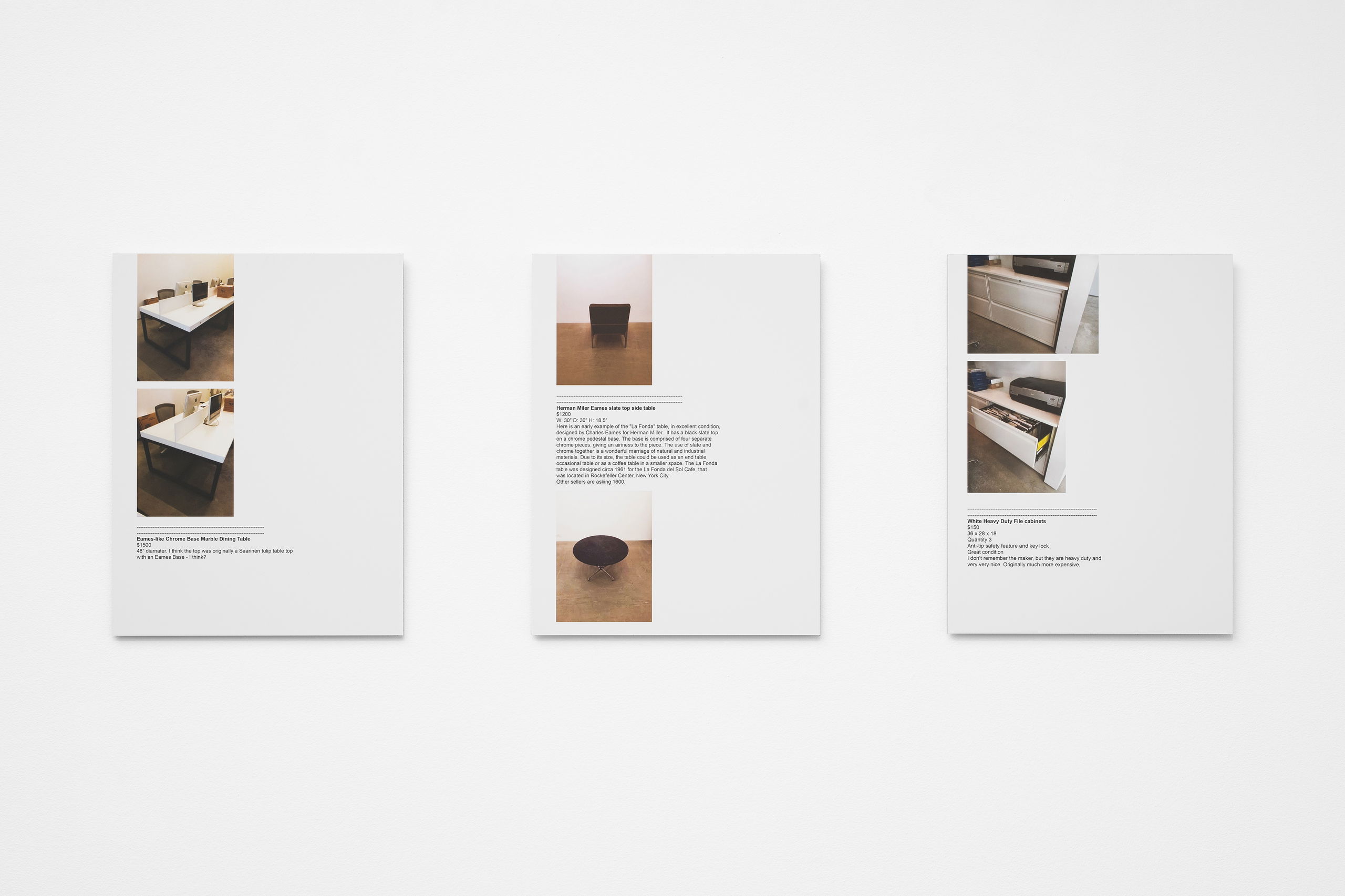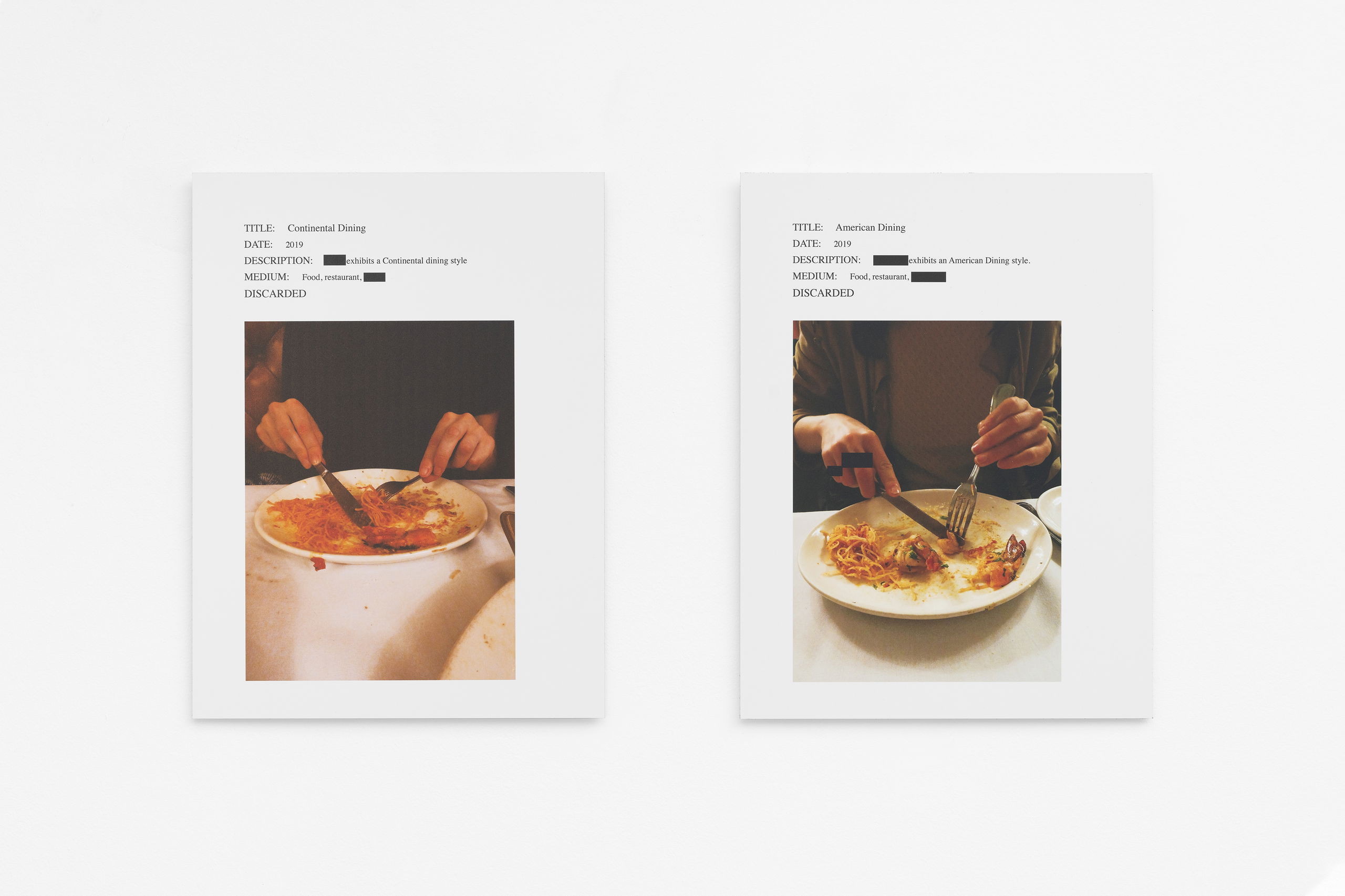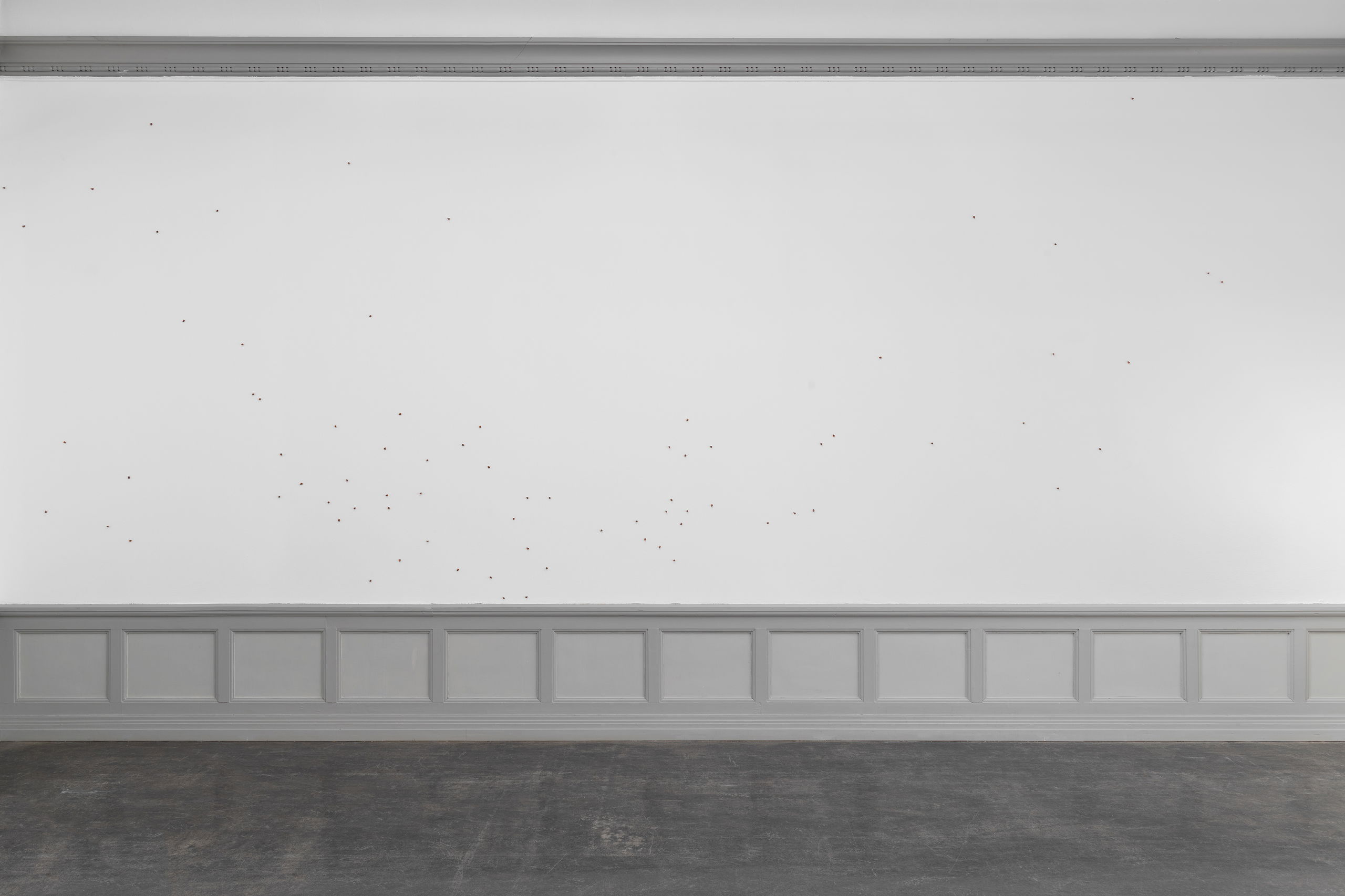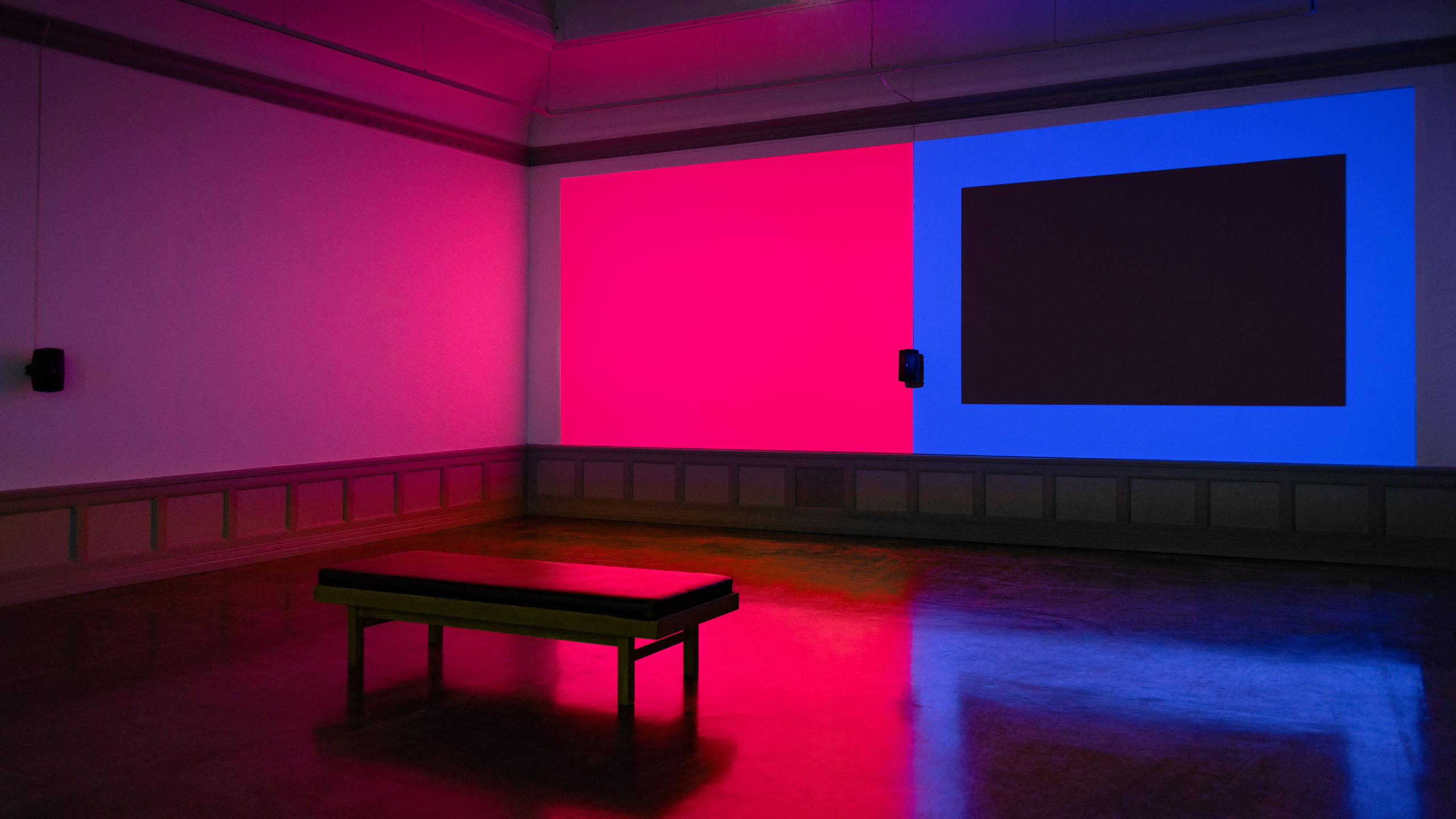For her first exhibition in Scandinavia, the American artist Violet Dennison is conducting a search for personal expressions hidden in the objective rhythms of systems and machines. In Dennison’s works, systems and codes aren’t inherently bad, nor are they good. They simply are elements open for us to fill with our own content, to react to, or put into a larger system.
In a previous exhibition, Dennison rerouted the drain of the gallery’s only sink into the exhibition space, gushing the dirty water onto the gallery floor. "I saw the pool of dirty water, where bacteria and germs were fermenting, as my work”, she says. It is the desire to hack everyday systems like this, and to show systematic fragility, that is characteristic of Dennison’s work.
Today, codes and systems are deeply embedded in our everyday life. However, as Dennison demonstrates, these systems have been part of human’s existence since
For her first exhibition in Scandinavia, the American artist Violet Dennison is conducting a search for personal expressions hidden in the objective rhythms of systems and machines. In Dennison’s works, systems and codes aren’t inherently bad, nor are they good. They simply are elements open for us to fill with our own content, to react to, or put into a larger system.
In a previous exhibition, Dennison rerouted the drain of the gallery’s only sink into the exhibition space, gushing the dirty water onto the gallery floor. "I saw the pool of dirty water, where bacteria and germs were fermenting, as my work”, she says. It is the desire to hack everyday systems like this, and to show systematic fragility, that is characteristic of Dennison’s work.
Today, codes and systems are deeply embedded in our everyday life. However, as Dennison demonstrates, these systems have been part of human’s existence since the dawn of civilization. In her work, Dennison explores the potential connections between spirituality, healing, undetectable systems and codes. For Dennison, codes and data are not only found in machines, but are integral to the human narrative.
In this exhibition, the two-channel video and audio installation Dance Dance Revolution (2019) is shown for the first time. The work depicts a popular arcade game where the point is to mimic dance moves provided by a machine, with an audio track consisting of a morse code created through the translating of gaming charts into four unique sound waves. The game is a fabricated night club experience, where the user is not actually replicating human movements, but rather the machine's simulation of the human dance experience. At one point, the video shifts from depicting dance moves to a left-right movement of color and sound. The pattern evokes code language, and points to the new trauma treatment, EMDR, where patients unpack painful memories by using left and right eye movements in combination with sound and the physical tapping of hands and toes.
The back and forth movement of the video — a binary pattern of alternating opposites — can be traced back to systems historically bound to human culture; opposites like up and down, winter and summer. In logic, binarity is used for truth and lies, and in mathematics the use of binary math models has been traced as far back as 500 BC. Today, binarity is connected to machine codes in a 0-1 pattern.
The large-scale, basket-shaped sculptures Chapter One: Nothing Really Mattress But I Guess I Knew That All Along, Chapter Two: Daisy Chain, Chapter Three: Infinite Nightclub and Chapter Four: Disappointment (all 2019) have been constructed using a binary knot code created by Dennison. The code is based on her written memoirs. The artist has then used the technique of macramé — an ancient technique found in several cultures - to build the sculptures. The uneven shapes are modelled on Japanese basket weavings, Ikebana, where individual baskets are made to harmonize with seasonal floral arrangements. Rather than mimic a perfect geometrical shape, parts of the baskets collapse under their own weight and are held together by the knots they are constructed from. The knots represent a binary system where the maker binds through, over, around and in-between. The cyclical pattern also points to the historical use of binding knots to keep records, count days, to evoke memories or reach spiritual awareness with artifacts like rosaries. Through the use of plastic, a material made to outlast most lifespans, the artist also points to the cyclical patterns we find in our own existence.
Divination (2019), a sound work consisting of iPhone loudspeakers and audio wiring, is constantly emitting a prediction of the artist’s future, made by the spiritual medium Dainichi Lazuli. The language of the prediction, or divination, is however encrypted. The code can only be read by other machines — not by humans — and is commonly used to send information to user's gadgets and platforms while offline. The encryption remains invisible to human sight and inaccessible without the decoding key. In this work, the artist's divination is surrounding us, reminding us of hidden elements in our lives, which might not be accessible or as easy to grasp as those that we are constantly exposed to.
In the work 0013283055 0013283004 0005334936 0000835427 0013283057 0013283054 0201608618 0013283011… (2019), Dennison is exploring her own position as an artist in the systems of the art world. Here, she is showing a stylized map of electromagnetic fields charted in her studio in New York. The copper pieces mounted on the wall are casts of genetically modified corn seeds, each holding a frequency transmitter identification tag emitting similar electromagnetic signals into the gallery. These tags are typically used to track commercial goods and livestock, and have recently been implanted into humans. The work questions how elements in larger systems are expected to act — in this case, the artist is questioning her own place in the larger structures of the art world. Through the replication of the electromagnetic fields, Dennison places herself and her everyday working life into the structure of the art institution. Yet at the same time, it raises questions about the role of the artist and the possibility to break out of the mold set by galleries and the art world in general.
The photographs FWD: To Sell. La Fonda (2019), FWD: To Sell. Eames-like (2019), FWD: To Sell. Heavy Duty (2019) depict an actual email sent from a gallery in New York liquidating their last assets before going out of business. The identity of the gallery can only be revealed by those on the mailing list, and we are therefore missing a piece of the puzzle. Uncertainty is an undercurrent in these works, setting us up to misunderstand. Similarly, Whisper F33d (2019), American Dining vs. Continental Dining 1 (2019), and American Dining vs. Continental Dining 2 (2019) show documentation of works by Dennison, but it is unclear if these works ever existed. It is up to the audience to decide if these works are real, and to question which part of the work is content and which part is highlighting the system that the works are existing within (and can they ever be separated?). As is true of several works in this exhibition, these are transcriptions of events, which seem to suggest that the format or the system itself is as meaningful as that which it contains.
The exhibition is the result of Dennison's 2018 residency as part of the Kunsthall Stavanger Artist Residency program. The Kunsthall Stavanger Residency is an extension of the Kunsthall’s stated mission to serve as a platform for the production, exhibition, and distribution of artworks that are part of a large international discourse.
b. 1989
Violet Dennison (b. 1989, Bridgeport, CT; lives in New York) is a sculptor and multimedia installation artist. She was one of the founders of Violet’s Cafe, an artist-run project space, and has shown both internationally and across the U.S. Her work has appeared in Mousse, Artforum, and the New York Times. Her work has been included in the New Museum Triennial, Songs for Sabotage (NY) and Abracadabra, Main Project of the 6th Moscow International Biennale for Young Art (RU), as well as exhibited in group shows including Kunsthaus Kollitsch (AT), Bureau (NY) and David Zwirner (NY). She has had solo exhibitions at Jan Kaps (DE) and has a forthcoming show at Kunstverein Freiburg in June 2019.



















